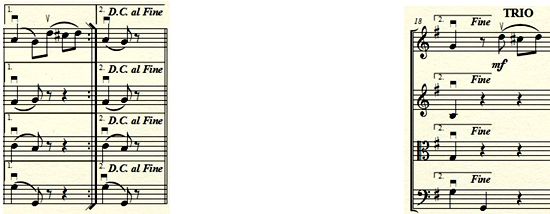MINUET in G — LUDWIG van BEETHOVEN


We’re happy to be back and excited to share our arrangement of a graceful piece, written by Beethoven.
Best known for his 9 symphonies, concertos, string quartets and numerous piano works, Beethoven composed masterpieces, even after losing his hearing in his mid 20’s. Performing as a concert pianist was Beethoven’s main source of income and as his hearing declined, he was unable to continue concertizing. In the face of this challenge, Beethoven’s quest for creating great art never ceased. Beethoven went on to become one of the most beloved composers of all time.
In the Classical Period, Minuets began to include a Trio section, often performed by select solo instruments. The Minuet and Trio form evolved to begin with the Minuet, continue to a Trio section, and then return to the Minuet again without repeats. Everyone then remembered the main melody as popular music of the day.

D.C. al Fine is written at the end of the Trio section, which means to return to the beginning of the piece and to end at the word Fine.
Observe all repeats, the D. C. and the Fine.
Peg and Spike’s elegant arrangement of Beethoven’s Minuet in G is ahead!

Ludwig van Beethoven (1770-1827) was a German composer, and his music bridged the gap between the Classical and Romantic periods.



